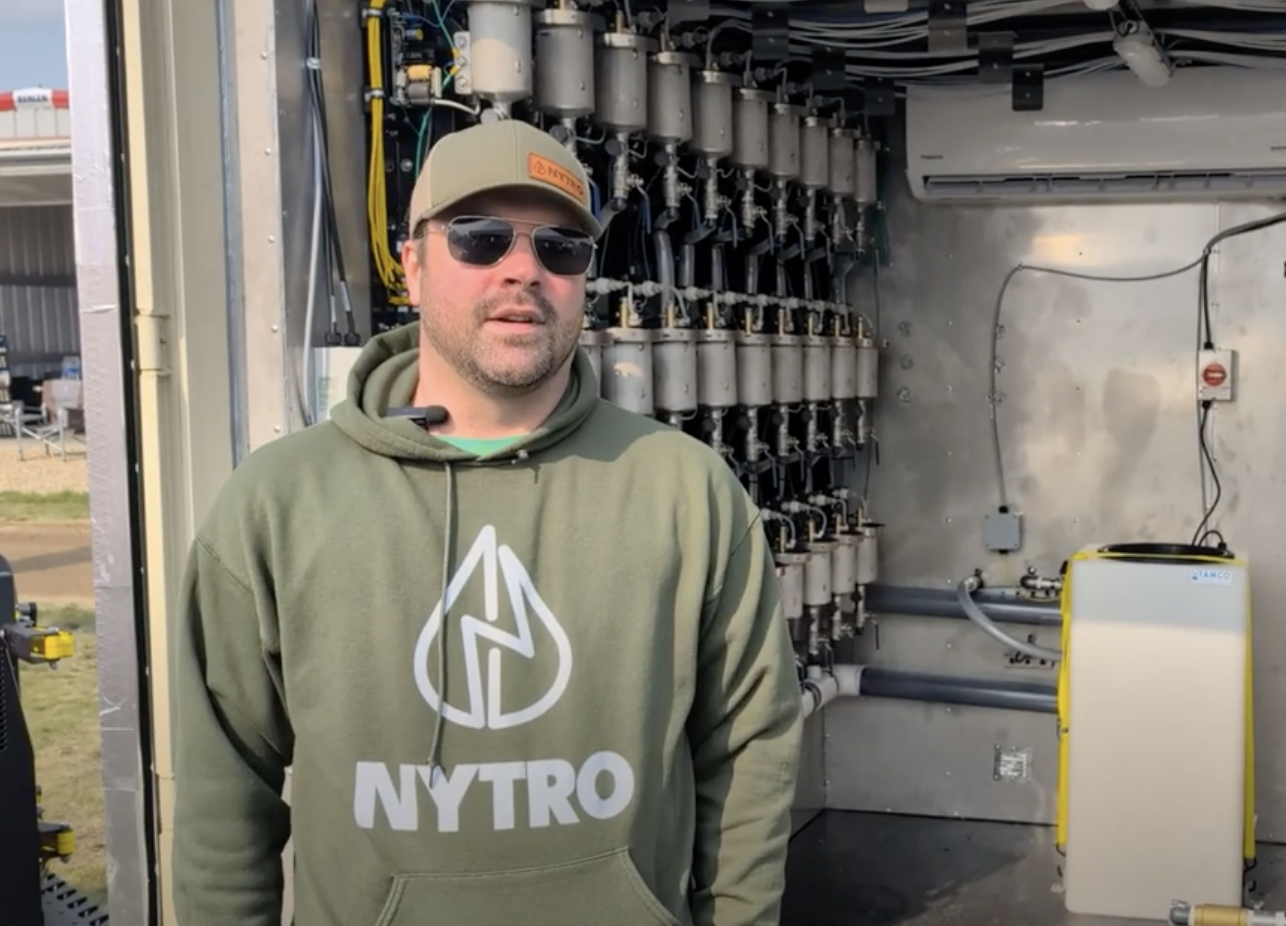In a perfect world, a soil test report wouldn’t include a fertilizer recommendation, says Mandy Huska, Saskatchewan agronomist for Taurus Technologies in Regina.
“Our company believes the actual fertilizer recommendation should only be made at the local level and based on local conditions.”
Taurus, an independent company formed in 2001 to be the on-the-ground arm for agriculture nutrition firms that previously did not have a presence in Western Canada, represents a sulfur company, a foliar nutrition company, a granular micronutrient company and A&L Soils Canada.
Read Also

VIDEO: Green Lightning and Nytro Ag win sustainability innovation award
Nytro Ag Corp and Green Lightning recieved an innovation award at Ag in Motion 2025 for the Green Lightning Nitrogen Machine, which converts atmospheric nitrogen into a plant-usable form.
She said the farmers and consultants who deal with Taurus do so because they want more than the basic nitrogen, phosphorus, potassium and sulfur results issued by most labs.
“Our base report from A&L includes organic matter, base saturation, calcium and magnesium plus the usual N, P, K and S, but we don’t just give the numbers on what’s in the soil. That alone isn’t even relevant,” Huska said.
“A producer needs to know about how much is available to the crop in that growing season. How much of those nutrients will be accessible to the crop. That’s what’s really important.
“We work with most of the top consultants on the Prairies. We have clients like AgriTrend and Hudye Soil Services. Their clients absolutely do not want to be spoon fed their fertilizer recommendations. They want the complete information so they can work out their own recommendations. That’s the way of the future.”
The Hudye example is typical of the nutrient management trend growing across the Prairies, said Taurus co-founder and co-owner Craig Davidson.
“Ben and Greg Hudye have definitely been going against the current up in that part of the world,” said Davidson, who serves Manitoba from his office in Virden.
“Ten years ago, a 30-bushel wheat crop up around Norquay, (Sask.,) would have been considered a good crop. Now they’re not happy unless they’re growing 70 bu. It’s a totally different mindset today.
“Our goal at Taurus is the same as (A&L president) Greg Patterson’s goal or Hudye’s or Farmers Edge or AgriTrend. We want our clients to understand what all the numbers mean. It’s a steep learning curve, but most farmers want to know what’s happening in their soil – what’s going on.
“The top echelon of intensive managers are already into this process. They’re well into studying and learning more about their soil.”
Davidson said many soil labs perform excellent chemical analysis. But excellent chemical analysis on its own doesn’t qualify a soil lab to make fertilizer recommendations.
He said it’s essential the numbers be applied with a background of local knowledge. When it comes to localized research, Davidson said A&L would have to be considered the leader.
“They spend a pile of their own money every year on research projects in conjunction with farmers and grower groups across Canada. In Manitoba alone, they spend upwards of $40,000 to $50,000 a year on research.
“They’re unique. They’re never happy with where they are. They’re always pushing and looking for a better way of doing things – always something more to be learned.”
From his office in Red Deer, Taurus partner Darren Bryant said clients are specific in their precision ag practices, with as many as five zones per quarter section. These zones are based on aerial photography, topography maps and a range of other overlays.
“These precision managers sample each zone individually and get an individual report on each zone. There’s definitely a higher cost when you farm with smaller zones, but the guys who do it say they’re making better use of their fertilizer dollar.
“You might have one zone heavy in residual phosphorous and the adjacent zone low in phosphorus. If you’re aware of this and also if you’re aware of what your optimal phosphorus levels should be in each zone, you can make better decisions.”
Although the trend is for mid-sized farms to adapt variable rate farming methods based on precise soil reports, Bryant said farms up to 30,000 acres are also applying precision farming techniques.
“There’s no set pattern. There’s a wide range of approaches by producers,” he said.
“Some use very small zones. Others do it on a quarter by quarter basis. The main point is that farmers are taking an initiative in understanding their soils.”
For more information, contact Mandy Huska at 306-547-7217, Craig Davidson at 204-761-5991 and Darren Bryant at 403-815-4787.















